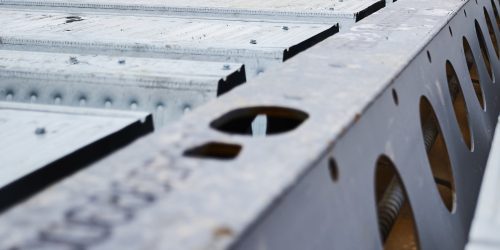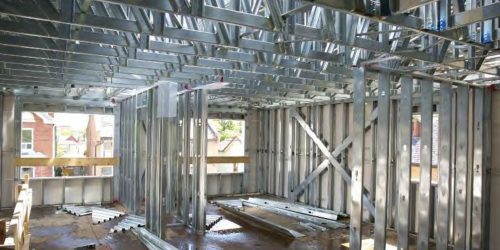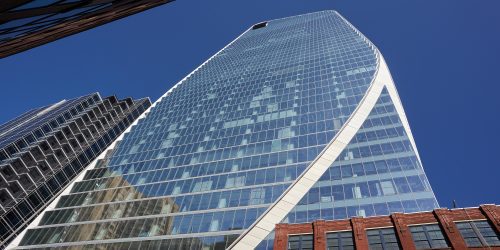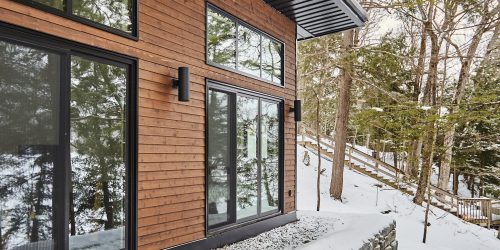Steel Receipts
ArcelorMittal Dofasco is one step closer to manufacturing clean, net-zero steel. EPDs are there to back their claims.
Story: Ian VanDuzer
Photography: Sandra Mulder
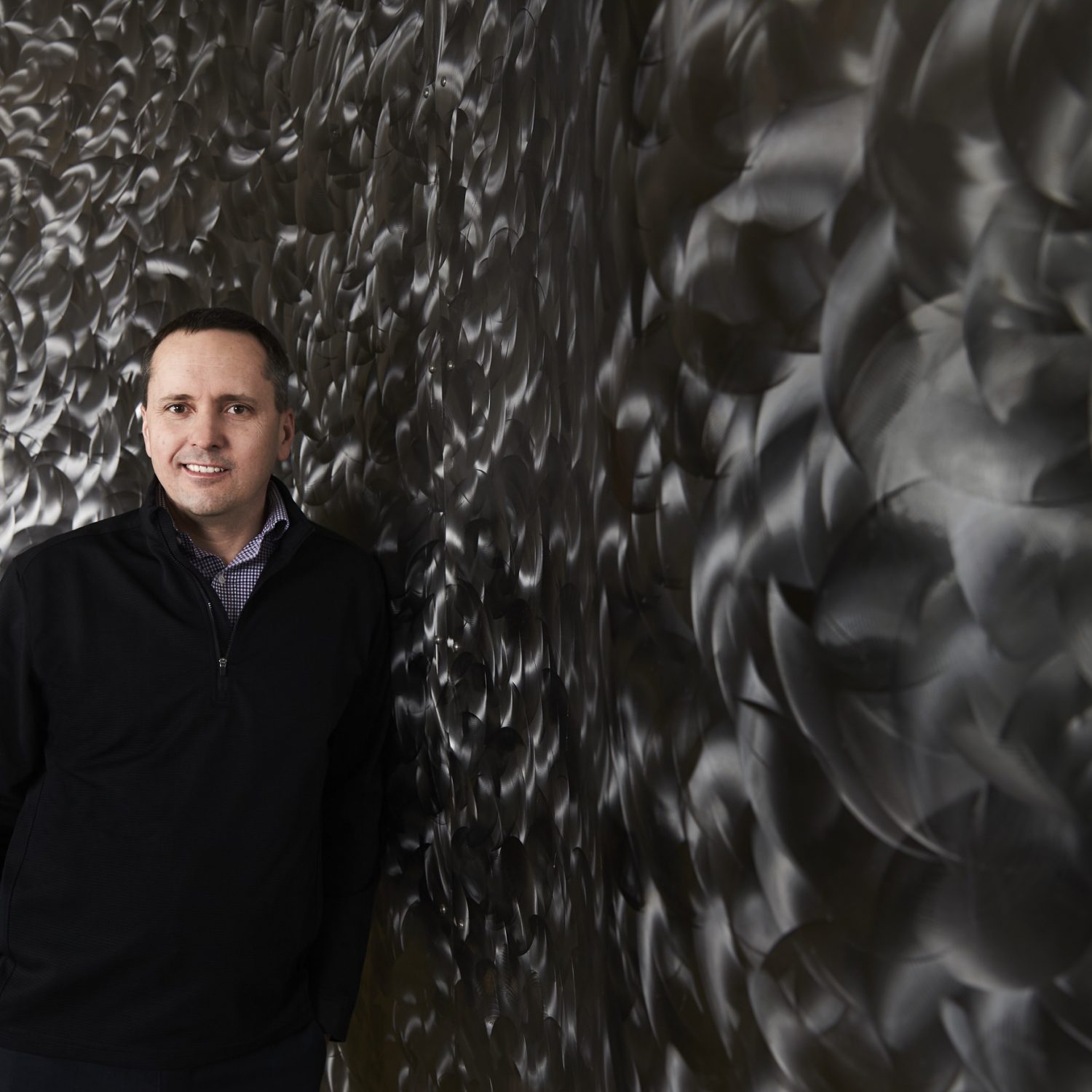
The day I spoke to Stan Lipkowski, Principal Projects Manager – Sustainability, Construction and Manufacturing Products for ArcelorMittal Dofasco, was a snowy Thursday in February. That normally wouldn’t be noteworthy, except that this year, that winter storm was the only time in the entire month it snowed.
Everywhere you look, you can see the growing effects of climate change: changing weather patterns, intense storms, unseasonable heat and – most recently – winter months where there are only a handful of days spent below zero degrees Celsius.
But it’s not just outside that these effects are felt. In boardrooms, government chambers, and project briefs across the globe, decision-makers are placing greater and greater emphasis on curbing the changes to our climate. And, increasingly, those decision-makers are examining the largest contributors of climate change, including the steel industry.
It’s an incontrovertible truth that the global steel industry is a leading emitter of CO2 emissions and greenhouse gasses. Depending on who you ask, the industry is accountable for between seven percent and ten percent of all global emissions. The International Energy Agency (IEA) and international consultancy firm McKinsey & Company both have steel production at eight percent; a 2019 study by the Canadian Steel Producers Association pegged the iron and steel industry as contributing a whopping twenty-four percent of global industrial CO2 emissions.
This is the elephant in the room: the steel industry is simultaneously providing solutions to our modern problems, as well as creating other ones. Steel serves as the backbones of critical renewable energy infrastructure, massive housing developments, and other necessary building projects, all things we need to combat climate change. At the same time, traditional steel manufacturing is clearly an issue and one that needs to be addressed immediately.
A Shift in Perspective
That’s the bad news. Here’s the good news: some of the largest steel producers are working hard to reduce their carbon footprint and make their way to achieving net-zero steel products. “It’s one of our top priorities,” says Lipkowski of ArcelorMittal Dofasco’s efforts to reduce their emissions. “Climate change is an existential crisis, one of the most critical issues of our times.
“We take it very seriously.”
To that end, ArcelorMittal has made significant investments into new technologies and practices meant to reduce the amount of greenhouse gasses created during manufacturing. The flagship of this shift is the XCarb® line of products. Created with a minimum of 70% recycled scrap steel, and produced in Dofasco’s electric arc furnace, XCarb® is the steel manufacturer’s main push towards offering steel with physically lower CO2 emissions.
“Dofasco makes the lowest embodied carbon sheet steel in North America,” Lipkowski beams.
But it wasn’t until very recently that Lipkowski had the numbers to back up that claim. Then, in November 2023, ArcelorMittal Dofasco published new Environmental Product Declarations (EPDs) on their XCarb® products.

Showing Your Work
EPDs are lengthy documents that go into the details of a product’s environmental impacts – including embodied carbon emissions. “It’s the most scientifically robust framework for reporting the environmental impacts of products,” Lipkowski, who worked on the XCarb® EPDs, explained. “They’re based on a well standardized accounting methodology.”
When dealing with engineers and architects – highly-technical professions – showing a credible process behind your claims is essential, Lipkowski says.
More than any one facet of the process, EPDs document the estimated emissions across a product’s entire lifecycle. “Everything is modeled, from raw material extraction to the production of our finished products,” Lipkowski says. “It’s a cradle to gate approach.”
For example, Lipkowski says that, since XCarb® steel is produced in Dofasco’s electric arc furnace, it’s connected to the provincial electricity grid. “So, I have to account for where that electricity is coming from,” he says. “In Ontario, 60% of our electricity comes from nuclear power. I have to account for the environmental impact of mining that little bit of uranium that we ‘use’ to create one ton of finished steel.”
EPDs report everything from raw material extraction to transportation to the manufacturing process to end of-life processes. The result is a standardized report of the environmental impact of the steel up to the point where it gets sent to customers who turn Dofasco’s steel into specific products.
Once Lipkowski finished his work, everything was sent to and verified by third-party agencies that specialize in these specific life-cycle studies. Those checks are what gives EPDs their credibility.
The Sneaky Costs of Transportation
As the carbon footprint of steel products becomes smaller, the environmental impacts associated with transporting steel becomes much more noticeable. "Obviously the distance between the mill and the customers can matter a great deal in determining how low the carbon footprint of the steel ends up being," Lipkowski says. “A significant portion of the steel used for construction projects in Canada is imported from different regions of the world or from the US.”
Lipkowski uses one example to make his point. “We looked at a case study, where the project site was in the GTA,” he says. “The steel was originally coming from a mill in Arkansas. To get the steel from Arkansas to the GTA was 170 kg of CO2 that would go into the atmosphere.”
“But if the steel came from Hamilton, then that embodied carbon drops to 10 kg.”
Using EPDs to Avoid Headaches
EPDs are for more than the environmentally conscious. “Even if greenhouse gas reduction is not your top priority, embodied carbon targets will soon be mandated for government funded projects,” Lipkowski says.
Governments account for a good portion of construction contracts in both the United States and Canada. Even if a project isn’t directly tied to the government, their regulations may end up being adopted by some of the private sector. "By using ArcelorMittal Dofasco EPDs, which represent the lowest embodied carbon sheet steel offered in North America, architects and engineers can contribute to meeting sustainability requirements and certifications, while optimizing the environmental performance of their projects."
According to Lipkowski, California was the first big government to start setting emission targets on steel used in construction projects. Several other states followed California. And then, in 2022, the Biden administration announced more than $600 billion in funding for major infrastructure projects over the next five years as part of the Inflation Reduction Act.
“That’s an unprecedented amount of money,” Lipkowski says, pointing out that steel procured using IRA funding will have to meet embodied carbon targets. “You have to pay attention to that.”
In Canada, the federal government hasn’t mandated targets for steel – yet. “That was supposed to be late in 2023,” Lipkowski says. “The government just finished setting targets on concrete, and now they’re working on steel.”
For Canada, emission targets on steel are a question of ‘when’, not ‘if’.
Almost all of these targets are met using EPDs. “They’re the new currency,” smiles Lipkowski. The industry-standardized documents means that architects and engineers can rely on them when deciding what products to use to hit emission mandates. And because they’re ubiquitous, governments accept them as documentation to make sure projects hit the markers that they say they do.
How to Go Green
Steel producers like ArcelorMittal are making progress towards carbon neutrality, but Lipkowski points out that the pressure is not just on the producers. “We can make the steel, but architects and engineers can make a big difference when specifying the type of steel used for their projects.”
When asked how individual architects can reduce their emissions on their projects, Lipkowski grins. “Just use XCarb®!” he says. “Barring that, specify that your steel is produced in an Electric Arc Furnace.”
Lipkowski says that if architects want clean steel, they need three things: “They need a high scrap content, which can only be achieved in an Electric Arc Furnace. That furnace should be coupled to a clean electricity grid, and they need to buy local.” As long as those three conditions are met, the resulting steel will be more of the solution than the problem.
And if we use enough clean steel, maybe February snowstorms will go back to being normal.
Specifications
PRESS RELEASE:
INTERVIEWEE:
Stan Lipkowski
Principal Projects Manager - Sustainability
Construction and Manufacturing Products
ArcelorMittal, Global R&D
INTERVIEWER/AUTHOR:
Ian VanDuzer
PHOTOGRAPHY:
Sandra Mulder
